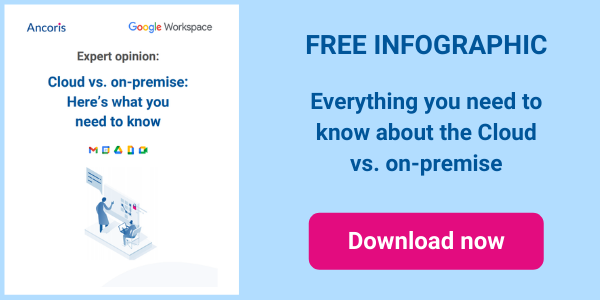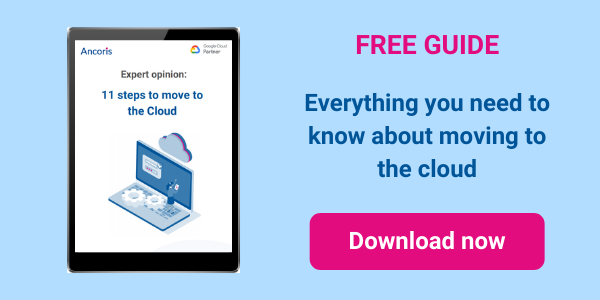Flexibility, innovation and cost reduction have been the driving forces for organisations to adopt cloud computing. But moving to the cloud can also help your business become more resilient and responsive, making it easier to react and thrive when the unexpected happens.
Is your “cloud” service really a cloud solution?
To see the business continuity benefits of migrating to the cloud, your cloud service needs to be a true cloud solution. Cloud computing and traditional hosted services may both be hosted off-site, but the way they work under the bonnet is very different. So the first step is to confirm you’re migrating to a true cloud solution and not a “cloud-washed” traditional hosting service.
A true cloud solution will:
- Offer immediate provisioning and completely flexible capacity, whether you want to add one user or 10,000. If the vendor has to ask how big or small you are, or ask when you want it delivered, or tell you it will take a certain amount of time to deliver it, it’s not a cloud solution.
- Cost significantly less than running in house or in a traditional data centre. Cloud computing offers much greater economies of scale, because it doesn't just do the same things you were doing in-house more efficiently but delivers IT services in a very different way. If the vendor can’t pass on those savings, it’s not a cloud solution.
- Provide a security infrastructure designed for the cloud. If authentication services don’t allow secure access from the public internet to just a single application or set of data — and not everything on a whole domain or server — it’s not a cloud solution.
- Allow applications to be accessed through any device on the internet, whether that's a PC, tablet or smartphone. If you need to use a particular operating system or type of device, or install any software for on the device or in your infrastructure, it’s not a cloud solution.
- Support accelerated feature delivery for both third-party Software as a Service (SaaS) apps and your own custom apps. SaaS applications are typically updated with new features and functionality more regularly than on-premise software, often monthly rather than through major releases every two to three years. Similarly, Platform as a Service (PaaS) infrastructure makes it easy to adopt agile development methodologies that allow you to regularly release new features and improvements in your custom apps. If you’ll need to go through pain of a major upgrade to get new features, it’s not a cloud solution
So how does all of this help to improve business continuity? Here are 5 ways you’ll benefit
1. Work from any device, without needing to install anything
If your team needs to work from home or from a different office, they may have to use their personal Windows PC or Mac, a borrowed work laptop, or a newly shipped Chromebook.
Creating a digital workplace using SaaS applications like Google Workspace lets users access all their usual apps and documents from any device, as long as it has a web browser and an internet connection. There’s no need to install apps or extensions, and you don’t have to worry about whether the hardware is compatible.
With cloud telephony solutions like Google Voice, you can even allow employees to use their device to make and receive calls on their “office” number from anywhere.
Users can also continue to hold both formal and informal "face-to-face" meetings using cloud-based videoconferencing tools such as Google Meet. Available as part of Google Workspace or as a standalone product, Google Meet doesn't require any special hardware: you can set up and join meetings from any device. Participants can even join by phone if they don't have an internet connection. And Google Meet benefits from the same secure-by-design infrastructure, built-in protection and global network that Google uses to secure your information and safeguard your privacy.
2. Ensure documents and files are always available — without worrying about storage
Cloud content management solutions like Google Drive let you store your documents in the cloud so your team can access them at any time from any location, using powerful tools to find what they need.
You also won’t lose access to files if someone’s device is stolen, lost or suffers a hardware failure, or if they leave the company. There’s no need to worry about running out of disk space or server failures, and your data will be protected by world-class security measures, including fine-grained control over who can access each file and encryption of data at rest and in transit.
3. Enjoy the benefits of a highly fault-tolerant environment — as standard
In the cloud computing model, your data is securely replicated across multiple data centres every time it changes, so there’s always a copy immediately available in the event of a disk or server failure. Cloud providers like Google Cloud will also automatically back up your data, retaining copies by default for a short time in case your data becomes corrupted and you need to roll back any changes by a few hours or days. Naturally, they’ll also provide you with tools to help you implement more comprehensive automated backup strategies.
Not only will your data be protected but your applications will be running on fault-tolerant compute, storage and network resources. If a server or storage device fails, another identical instance will be spun up before you’ve even noticed, while traffic will be seamlessly rerouted if a network link goes down. In other words, you’re getting all the benefits of hot standby without the costs.
Finally, because your cloud provider is handling routine management tasks such as monitoring and logging, rolling out security patches and load balancing, there’s much less risk your systems will be taken down because of a delay in implementing a security patch or because a new server has been misconfigured.
Don’t forget, too, that cloud computing is often more secure than on-premise IT, so you’re less likely to experience security breaches that disrupt your business operations. Google employs a large team of dedicated security, privacy and internal audit professionals who ensure security isn’t an afterthought but influences every aspect of Google’s cloud services.
4. Minimise the risk of disruption when deploying or upgrading applications.
There’s always a possibility that when you move a new app or an update from development and test into live production, you’ll run into unexpected errors. Sometimes that’s because testing wasn’t rigorous enough, but it can also happen when there are differences between test and production environments.
One way to minimise this risk is to use a cloud provider — like Google Cloud — that lets you create development, staging and production environments that are identical. That gives you the confidence that when you go live, you won't encounter any nasty configuration surprises.
Another approach is to use technologies such as containerisation that package your application code with everything you need to run it, including the operating system. You can then "ship" that container to any laptop, server, virtual machine or cloud provider that can run containers. knowing your apps won’t break when you move them into production.
With Google Cloud’s containerisation solution, Kubernetes, you’ll also benefit from a self-healing architecture that automatically moves apps to keep them running even if the underlying infrastructure fails.
5. Create flexible and resilient business processes
Custom mobile apps running in the cloud can allow employees to pick up work that’s normally handled by colleagues or let you to redirect work to different team members as needed. This particularly applies to field workers, who can be provided with all the information and tools they need to visit any customer and deliver the same level of service — even if it’s their first visit to that site.
For example, we worked with Rentokil to develop a cloud-connected Android-based app that gives the company’s 14,000 pest control technicians a digital floor plan for each site, complete with up-to-date information on which pest control products have been installed and their precise location. Alerts show technicians which products need attention, so they don’t need to know anything about past visits. They can then use the app to record the actions they’ve taken, ensuring the information on each site remains current when the next technician makes a visit.
Using mobile web forms to eliminate paper-based processes also means your business won’t grind to a halt because the post office has gone on strike or half your data entry team are out sick. Google Forms, part of Google Workspace, lets you quickly create simple, secure custom forms that can be used on any device. The data captured in the form can then automatically populate a Google spreadsheet or be used to feed data directly into your line-of-business systems.
Working with a Google Cloud Platform Premier Partner
As a leading Google Cloud Service Partner, we have considerable experience with Google Cloud Platform, both assisting clients to future proof their business with cloud infrastructure.
Cloud adoption is not just about agility and cost optimisation — it’s about building the very foundations you need to continuously innovate and stay ahead. A cloud-first architecture using Google Cloud Platform not only modernises your infrastructure but unlocks a whole new world of digital freedom and opportunity.
Our onboarding methodology will help you realise value in weeks, not months so you can save costs and increase agility.
If you’d like to find out more about moving to the cloud and how Google Cloud could help you, why not take a look at some of our customer success stories or browse our resources. Needless to say, please get in touch with our team if you'd like more practical support and guidance.


